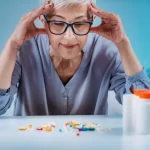Key Points
- Teen depressive states often appear as irritability, withdrawal, or changes in sleep, appetite, or school performance.
- Hormonal changes, social media, and academic stress make teens especially vulnerable.
- Parents who recognize early signs and respond with support—not judgment—can help protect their child’s well-being.
“I Don’t Know What’s Wrong, I Just Feel Off.”
That simple sentence—“I don’t know what’s wrong, I just feel off.”—captures how many teenagers describe early depressive states. Unlike adults, teens may struggle to name or explain what’s happening inside. Instead of saying they feel “sad,” they may seem angry, withdrawn, or simply not like themselves.
Understanding how to recognize these shifts—and respond with empathy—can make a powerful difference in a teen’s life.
Why This Matters
Teen mental health is in crisis. According to the CDC’s Youth Risk Behavior Survey, 42% of U.S. high school students in 2021 reported persistent feelings of sadness or hopelessness, a 13% increase since 2011. Nearly 1 in 5 seriously considered attempting suicide, and girls and LGBTQ+ teens were most affected CDC, 2023.
Adolescence is already a time of emotional turbulence. But today’s teens face added pressures: digital overload, academic stress, shifting social norms, and lingering pandemic effects. If depressive states are not addressed early, they can severely impact mental, emotional, and physical development.
Recognizing Teen Depressive States
According to the Diagnostic and Statistical Manual of Mental Disorders (DSM-5) and guidance from the National Institute of Mental Health, depressive states in teens often differ from adult presentations. Key signs include:
- Irritability or anger rather than sadness
- Social withdrawal from family or friends
- Loss of interest in activities once enjoyed
- Changes in sleep (trouble sleeping or sleeping too much)
- Appetite or weight changes
- Fatigue or low energy
- Feelings of worthlessness or excessive guilt
- Declining academic performance
- Physical complaints like headaches or stomach pain without a clear medical reason
- Talk of death or self-harm, even if jokingly
A depressive state is more than a “bad mood.” If these behaviors last at least two weeks and interfere with daily functioning, professional help should be considered NIMH, 2023.
What’s Happening in the Brain?
Teen brains are still under construction—especially in areas that control emotion, decision-making, and stress response. The prefrontal cortex, which helps regulate judgment and impulse control, develops more slowly than the limbic system, the brain’s emotional and reward-processing center. This imbalance makes teens more vulnerable to emotional highs and lows, as the systems that generate feelings are more active than those that help manage them Casey et al., 2008.
At the same time, hormonal changes during puberty directly influence neurotransmitters like serotonin and dopamine, which play key roles in mood regulation, motivation, and reward sensitivity. These neurochemical shifts can intensify emotional reactivity or low moods, especially when paired with environmental stressors. For example, increased academic demands, social pressures, disrupted sleep, or excessive screen time can all heighten risk for depressive states. In fact, research has shown a correlation between high daily screen use and greater rates of mood disturbances in adolescents Twenge et al., 2018.
Recognizing that these brain changes are biologically normal—yet deeply impactful—can help caregivers respond with compassion rather than frustration when teens seem overwhelmed or emotionally volatile.
How You Can Support Your Teen
You don’t need to be a mental health professional to offer support—but it helps to know what works. Here are five expert-backed ways to help:
1. Start With Observation, Not Interrogation
Approach gently. “I’ve noticed you’ve been quiet lately—want to talk?” is more effective than “What’s wrong with you?”
2. Validate Their Experience
Instead of minimizing (“It’s just a phase”), try: “That sounds hard. I’m here for you.” Validation fosters trust.
3. Encourage Structure
Support consistent sleep schedules, regular meals, and physical activity—all shown to improve mood and energy.
4. Be Present—Without Hovering
Daily check-ins, shared activities, or simple gestures like offering a snack can create connection points without pressure.
5. Seek Help Early
If your teen shows persistent symptoms, contact a school counselor, pediatrician, or mental health professional. Early intervention is linked to better long-term outcomes Weisz et al., 2017.
What Therapy Looks Like
Many teens benefit from Cognitive Behavioral Therapy (CBT), which helps them identify and challenge unhelpful thought patterns. Studies show CBT is especially effective for adolescents with mild to moderate depressive states David-Ferdon & Kaslow, 2008.
Other approaches include:
- Talk therapy, either individual or family-based
- Behavioral activation, encouraging positive engagement in daily life
- School-based counseling or peer support groups
- Teletherapy, which may be more accessible and comfortable for tech-savvy teens
- Medication, such as selective serotonin reuptake inhibitors (SSRIs), is considered only for moderate to severe cases and requires close monitoring
Barriers like cost, insurance, or stigma can prevent access—but nonprofit mental health organizations and local health departments often provide free or low-cost support.
Final Thoughts: Be the Safe Place
When teens feel overwhelmed, they don’t need perfect answers—they need connection, trust, and reassurance that they’re not alone. By staying informed, listening without judgment, and acting early, you can play a critical role in their recovery.
If you’re concerned about your teen, reach out to a trusted health professional or school counselor. Asking for help is not a sign of failure—it’s a sign of strength, both for you and your child.
The article does not in any way constitute as medical advice. Please seek consultation with a licensed medical professional before starting any treatment. This website may receive commissions from the links or products mentioned in this article.
Subscribe for Free for more insightful health articles tailored to your needs.
Sources
- CDC Youth Risk Behavior Data Summary & Trends (2023)
https://www.cdc.gov/healthyyouth/data/yrbs/index.htm - National Institute of Mental Health: Teen Depression
https://www.nimh.nih.gov/health/publications/teen-depression - Casey BJ, Jones RM, Hare TA. The adolescent brain. Science. 2008
https://doi.org/10.1126/science.1158359 - Twenge JM, Joiner TE, Rogers ML, Martin GN. Increases in depressive symptoms, suicide-related outcomes, and suicide rates among U.S. adolescents after 2010. J Adolesc Health. 2018
https://doi.org/10.1016/j.jadohealth.2017.11.083 - Weisz JR, Kuppens S, Ng MY, et al. What five decades of research tell us about the effects of youth psychological therapy. J Am Acad Child Adolesc Psychiatry. 2017
https://doi.org/10.1016/j.jaac.2017.05.015 - David-Ferdon C, Kaslow NJ. Evidence-based psychosocial treatments for child and adolescent depression. Clin Psychol Rev. 2008
https://doi.org/10.1016/j.cpr.2008.03.005
Last Updated on August 4, 2025



